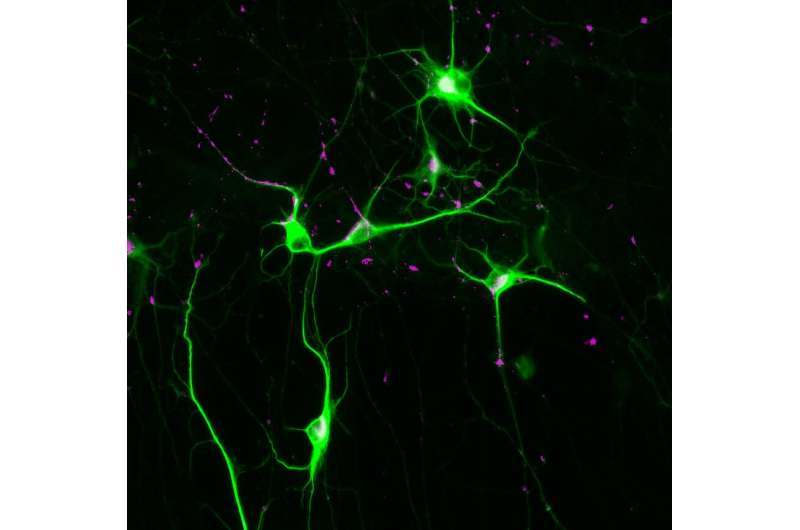This article has been reviewed according to Science X's editorial process and policies. Editors have highlighted the following attributes while ensuring the content's credibility:
fact-checked
peer-reviewed publication
trusted source
proofread
Potential therapeutic target for schizophrenia identified

Targeting calcium signaling in neurons represents a promising therapeutic approach for treating a rare form of schizophrenia, according to a Northwestern Medicine study published in Biological Psychiatry.
"This is the first time that human neurons are made and characterized from schizophrenia patients with the 16p11.2 duplication, one of the most prominent genetic risk factors in schizophrenia, and the first time that calcium signaling is found as a central abnormality in schizophrenia neurons," said Peter Penzes, Ph.D., the Ruth and Evelyn Dunbar Professor of Psychiatry and Behavioral Sciences and senior author of the study.
Schizophrenia is characterized by auditory and visual hallucinations, delusions, and trouble with forming and sorting thoughts, which severely impacts productivity and overall quality of life. The disease, which affects roughly one percent of the general population, has strong genetic associations, however the exact genes involved are unknown.
Patients with schizophrenia can be treated with antipsychotics, however those drugs only address "positive symptoms," such as hallucinations and delusions, and neglect to treat cognitive symptoms such as thought disorder. Despite the availability of antipsychotics, only some patients will respond to them and the development of new treatments has been met with challenges, according to Penzes.
"This has been hampered by the fact that studies in animal models, such as mice, do not translate well to humans. In other words, some new drugs may work well in experimental animal studies, but fail when taken into human clinical trials," said Penzes, who is also a professor of Neuroscience, of Pharmacology and director of the Center for Autism and Neurodevelopment.
A potential solution to developing new therapies for schizophrenia is induced pluripotent stem cells (iPSCs), cells derived from a patient's blood or skin that can be reprogrammed to be any type of cell in the body, including neurons.
In the current study, the investigators created iSPC-derived neurons from two patients with a rare form of schizophrenia containing the "16p11.2 duplication" mutation, which increases the risk of developing schizophrenia by sixteenfold, and three healthy patients. Neuronal cell lines were grown in Penzes' laboratory for seven weeks until complete neuronal networks were formed.
Using multiple advanced techniques including calcium imaging microscopy, high throughput electrophysiology and RNA sequencing, the investigators found that calcium signaling—when neurons communicate using calcium ions to promote cellular signaling and other essential intracellular functions—functions abnormally in the brain cells of patients with schizophrenia when compared to healthy neurons.
According to Penzes, next steps will involve using these iSPC-derived neurons to screen for novel drugs to treat this genetic form of schizophrenia. If successful, the drugs may be useful to treat patients with schizophrenia in general and other neurological disorders.
"The 16p11.2 mutation is also a prominent risk factor for autism; hence such drugs could also then be tested for treating autism," Penzes said.
More information: Euan Parnell et al, Excitatory Dysfunction Drives Network and Calcium Handling Deficits in 16p11.2 Duplication Schizophrenia Induced Pluripotent Stem Cell–Derived Neurons, Biological Psychiatry (2022). DOI: 10.1016/j.biopsych.2022.11.005


















